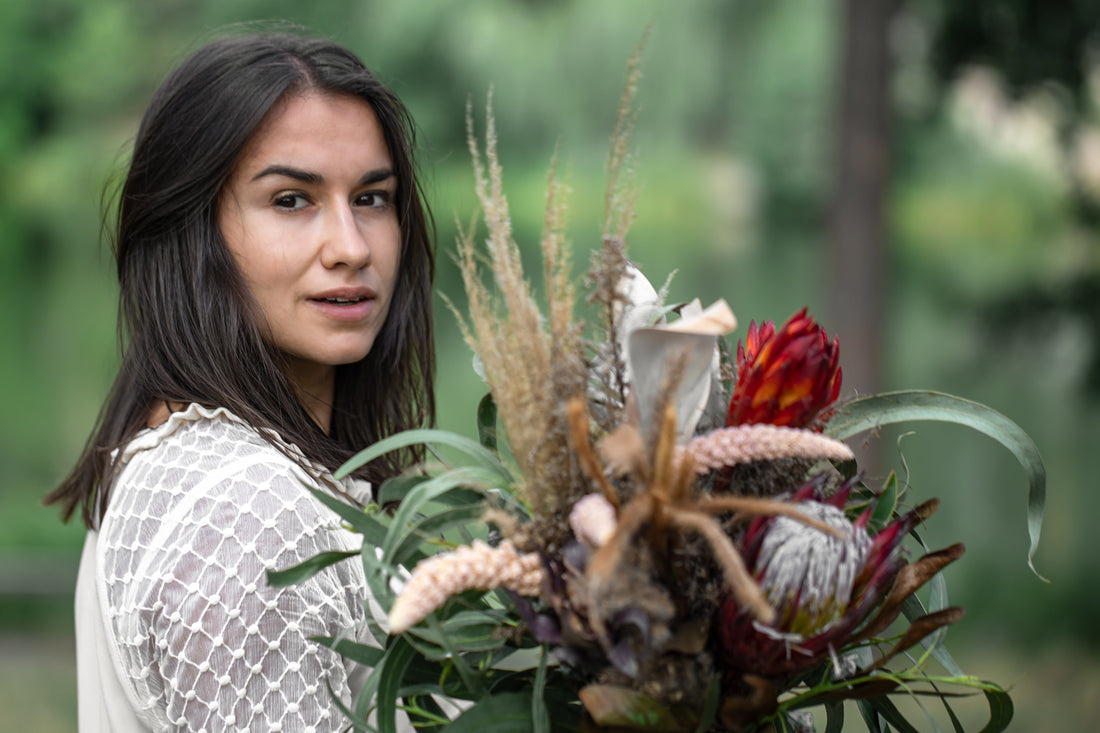
Blog Title: How Long Do Wild Flower Seeds Take to Grow?
Share
Table of Contents
- What is the typical germination time for wildflower seeds?
- What factors affect how long wildflower seeds take to grow?
- How long does it take to see blooms?
- Do all wildflowers bloom in the first year?
- How can you speed up the wildflower growth process?
- What are some examples of fast and slow-growing wildflowers?
- Does region or climate affect growth time?
- When is the best time to plant wildflower seeds?
- Conclusion
What is the typical germination time for wildflower seeds?

On average, wildflower seeds germinate within 7 to 30 days after planting. The time it takes depends on the variety of wildflower, soil temperature, moisture, and sun exposure. Some wildflowers like California poppies may germinate in under a week, while others like lupines might take up to a month.
To germinate successfully, wildflower seeds generally need:
-
Consistent moisture during the first 2–3 weeks
-
Soil temperatures between 55°F and 70°F (13°C–21°C)
- Good seed-to-soil contact, with seeds lightly pressed into the surface
What factors affect how long wildflower seeds take to grow?

-
-
Seed Type
- Annuals typically grow and bloom faster (60–90 days).
- Perennials often need more time and may bloom in the second year.
-
Soil Preparation
- Loose, weed-free soil boosts germination success.
-
Moisture
- Lack of water is a common reason for failed germination.
- Daily light watering in the first few weeks is recommended.
-
Sunlight
- Most wildflowers need 6–8 hours of direct sun per day.
-
Temperature
- Cold or overly hot soil temperatures slow growth.
-
Seed Depth
- Planting too deep can delay or prevent germination. Most wildflower seeds should be planted on the surface or just 1/16" deep.
-
Seed Type
How long does it take to see blooms?

You can expect to see blooms in 8 to 12 weeks after planting annual wildflower seeds. However, this timeline can vary:
- Fast bloomers like cornflowers or cosmos may flower in 60 days.
- Others like black-eyed Susans may take up to 90 days.
Perennials, although they germinate in the same window, often spend the first season establishing roots and foliage rather than blooming.
Do all wildflowers bloom in the first year?

No, not all wildflowers bloom in the first year.
- Annual wildflowers like calendula or zinnia complete their life cycle within one season and bloom the same year.
- Biennials (e.g., sweet William) grow leaves the first year and bloom the second.
- Perennials (e.g., echinacea, milkweed) usually establish in the first year and bloom starting the second year onward.
That’s why many seed blends, including Geva Grow’s regional wildflower mixes, contain a mix of annuals and perennials to ensure beauty in year one and ongoing blooms in years two and beyond.
How can you speed up the wildflower growth process?

To encourage faster and healthier growth:
- Scarify seeds – Gently rub hard-coated seeds with sandpaper to improve water absorption.
- Cold stratification – Some seeds benefit from 1–4 weeks in a fridge before sowing.
- Use proper soil – Avoid nutrient-poor or compacted soil. A light rake-over is usually enough.
- Mulch lightly – Use a very thin layer of straw to protect seeds while letting light in.
- Keep evenly moist – Use a fine mist to prevent washout and maintain consistent moisture.
These steps can reduce germination time by several days and improve overall bloom density.
What are some examples of fast and slow-growing wildflowers?

Here’s a table showing common wildflowers and their typical germination and bloom timelines:
|
Wildflower Type |
Germination Time |
Bloom Time |
|
Cosmos |
7–10 days |
~60–70 days |
|
California Poppy |
5–14 days |
~55–75 days |
|
Black-eyed Susan |
10–21 days |
~90 days |
|
Lupine |
15–30 days |
1–2 years |
|
Purple Coneflower |
10–20 days |
Year 2 onward |
|
Cornflower (Bachelor’s Button) |
7–14 days |
~60–80 days |
This diversity is why using a blend of species ensures you get quick results and long-term sustainability.
Does region or climate affect growth time?

Yes, regional conditions are a major factor in how long wildflower seeds take to grow. For example:
- In the Midwest, where rainfall and seasonal change are more predictable, germination rates are consistent.
- In hot, dry regions like parts of the Southwest, wildflowers may need supplemental water.
- Coastal regions may need protection from strong winds and salt air.
Geva Grow’s regional wildflower mixes are tailored for specific zones in the U.S., improving germination rates and bloom success by accounting for local climate and soil profiles.
When is the best time to plant wildflower seeds?

The ideal planting time depends on your location:
- Fall planting (Sept–Nov): Works well in mild climates where the ground doesn’t freeze deeply. Seeds overwinter and germinate in spring.
- Spring planting (Mar–May): Best for areas with cold winters. Wait until after the last frost when soil warms to 55°F.
Pro tip: Avoid summer planting. High heat and inconsistent rain can harm seed development.
Conclusion
So, how long do wild flower seeds take to grow? Most wildflower seeds begin germinating within 7 to 30 days and bloom between 60 to 90 days if conditions are ideal. However, full wildflower meadows take a bit of patience—especially when planting perennials, which reward you in the long term.
If you’re ready to create a beautiful wildflower garden, Geva Grow offers carefully curated regional seed blends designed to thrive in your environment and deliver stunning, season-spanning blooms year after year.








